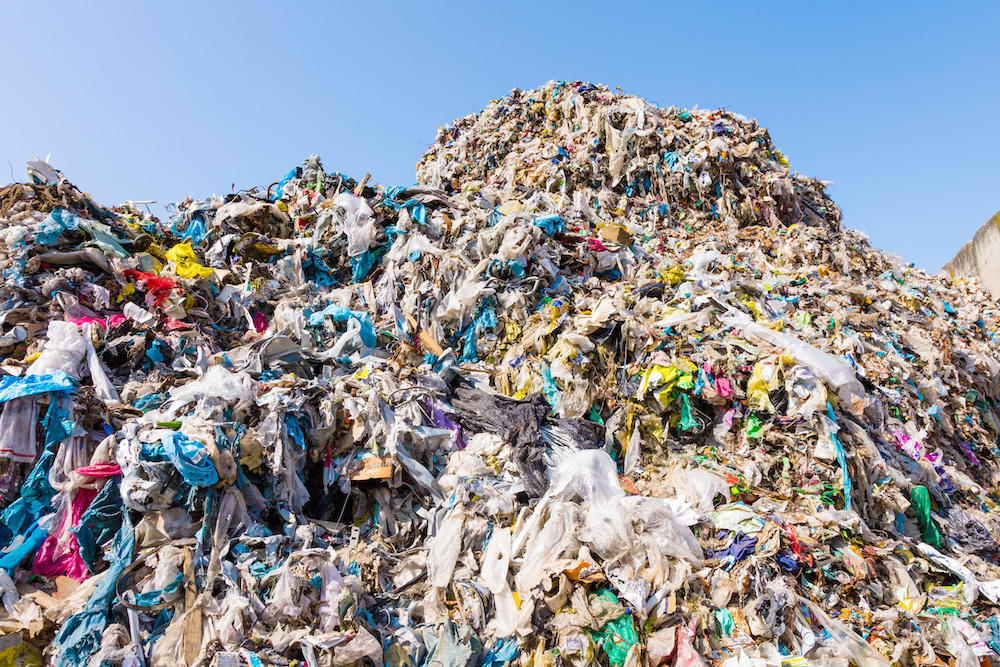What is the Linear Economy?
📗 Column
In 2023, a global impact organization, Circle Economy, reported a staggering figure: the global economy today is only 7.2% circular [1]. While the concept of a circular economy is gaining attention worldwide, our society is still dominated by a linear economy. What exactly is a linear economy and why do we need to transition away from it?

What do we mean by the linear economy?
The linear economy is based on a “take-make-use-waste” approach, where we extract raw materials from the Earth, process them into products, use them, and dispose of them. This linear economic model has been dominant since the Industrial Revolution in the 18th century.
Why is the linear economy a problem?
The problem with the linear economy is that it rests on the false assumption that the resources — not only raw materials but also land and water — are infinite and waste can be disposed of endlessly. The current linear economic system is clearly unsustainable and damaging to the planet:
- Extraction of virgin materials: Globally, we extract more than 100 billion tonnes of virgin materials from the Earth every year [1]. In just 15 years, between 2000 and 2015, the amount of materials taken from the Earth was more than half of those extracted in a century between 1900 and 2000, according to a 2022 World Bank report. The report further estimates that the worldwide demand for virgin materials will increase at least two-fold by 2050 [2].
- Use of fossil fuels: The global consumption of fossil fuels (gas, oil, and coal) has increased exponentially since the 1950s — from 20,139 TWh in 1950 to 136,018 TWh in 2021 [3].
- Unsustainable use of land and ocean: 75% of the land surface and approximately 66% of the maritime environment have been largely altered by human activities [4].
- Unsustainable use of water: More than 2 billion people live in countries with high water stress, while nearly 4 billion people experience severe water scarcity at least one month a year. Despite the current situation, water demand worldwide is estimated to rise by 20 to 30% by 2050, largely due to increasing demand in the industrial and domestic sectors [5].
- Biodiversity loss: The extraction and processing of natural resources account for more than 90% of biodiversity loss [6].
- Pollution: In 2019, just 0.18% of the global land area and 0.001% of the population worldwide were exposed to fine particulate matter (PM2·5) at concentrations below 5 μg/m3, a safe limit set by the World Health Organization [7].
- Mass waste: Around 2.24 billion tonnes of municipal solid waste was generated globally in 2020, of which an estimated 1.86 tonnes was residual waste — non-recyclable waste that may end up in landfills, incinerated, or ultimately dumped. By 2050, the annual waste generation is expected to grow to 3.88 billion tonnes [8].
The transition from a linear to a circular economic model requires a fundamental change in the way we design, produce, and use products. Check out some of our other articles to learn about the circular economy model.
References
[1] Circle Economy, “The Circularity Gap Report 2023,” 2023. Accessed: Apr. 20, 2023. [Online]. Available: https://www.circularity-gap.world/2023
[2] International Bank for Reconstruction and Development / The World Bank, “Squaring the Circle: Policies from Europe’s Circular Economy Transition,” 2022. Accessed: May 01, 2023. [Online]. Available: https://www.worldbank.org/en/region/eca/publication/squaring-circle-europe-circular-economy-transition
[3] H. Ritchie, M. Roser, and P. Rosado, “Energy,” OurWorldInData.org, 2022. https://ourworldindata.org/energy (accessed May 02, 2023).
[4] IPBES, “Global assessment report of the Intergovernmental Science-Policy Platform on Biodiversity and Ecosystem Services,” 2019. Accessed: Jun. 02, 2023. [Online]. Available: https://www.ipbes.net/global-assessment
[5] WWAP (UNESCO World Water Assessment Programme), “Leaving no one behind : the United Nations World Water Development Report 2019,” 2019. Accessed: May 01, 2023. [Online]. Available: https://www.unesco.org/en/wwap/wwdr/2019?TSPD_101_R0=080713870fab2000cff5039e667b8323f930df26d2fe3bc9a6a564100bd284dbe0ac624d8c60082a08cc740440143000f3b618dc1962954aa2335d8d46c6821db445b380c9441a65a991791743a397b305b5b780bb02c878740f3ba3e5549ebd
[6] The Ellen MacArthur Foundation, “The Nature Imperative: How the circular economy tackles biodiversity loss,” 2021. Accessed: May 01, 2023. [Online]. Available: https://ellenmacarthurfoundation.org/biodiversity-report
[7] W. Yu et al., “Global estimates of daily ambient fine particulate matter concentrations and unequal spatiotemporal distribution of population exposure: a machine learning modelling study,” The Lancet Planet Health, vol. 7, Mar. 2023, Accessed: May 02, 2023. [Online]. Available: https://www.thelancet.com/journals/lanplh/article/PIIS2542-5196(23)00008-6/fulltext
[8] S. Kaza, S. Shrikanth, and S. Chaudhary, “More Growth, Less Garbage,” Washington, DC, 2021. Accessed: May 02, 2023. [Online]. Available: https://openknowledge.worldbank.org/entities/publication/ba7feea4-0abe-59fb-bc60-ce6b60eb1ceb
Author: Saki Kobayashi / 小林 さき